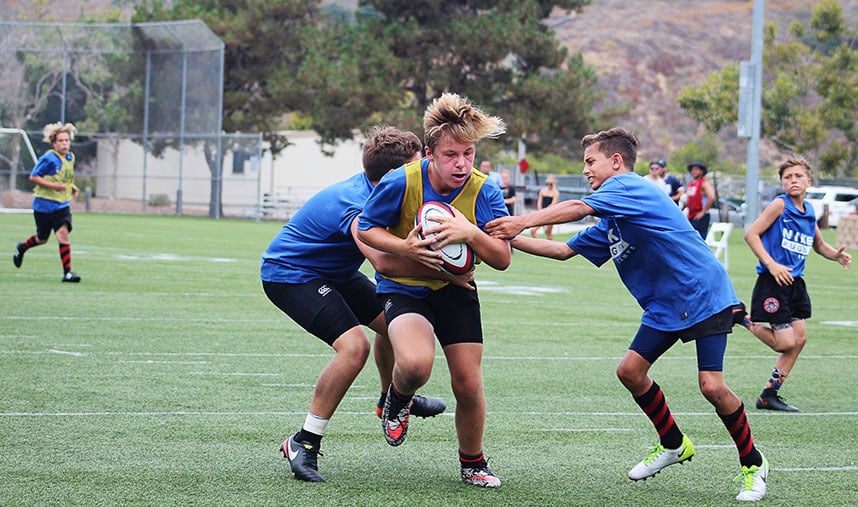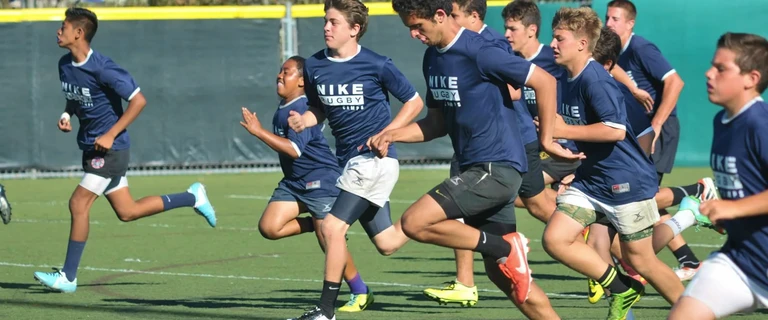Rugby Tip
How to Play 15s Rugby: Rules and Laws of the Game

The sport of rugby has quickly become one of the world’s most popular sports. Athletes are attracted to the sport because of its intense physical demands and its unique values in camaraderie, respect and teamwork.
Nike Rugby Camps give young athletes the opportunity to train with distinguished college coaches to improve their skills. Below is a quick guide to the rules, scoring and contact situations that occur in a match.
Objective – The objective is to carry the ball to the opponents’ goal line and force the ball to the ground to score. The goal is to work as a team to create space for the ball and to use that space strategically. However, to move up the field in phases of play, the ball needs to be passed backward. In traditional 15s rugby, teams consist of 15 players that are split into two groups, forwards and backs. There are two 40 minute halves and a 10 minute break in between the halves in a 15s rugby match.
General Rules
Open Play: This occurs during any phase of the match in which the ball is being passed or kicked between teammates. Both teams are fighting for the ball with the intent to make forward progress towards their opponents’ goal line.
Kicking: A player may choose to kick the ball instead of passing. The kick may travel forward, however, teammates must be behind the ball. If any teammate is in front of the ball at the time it is kicked, they are out of play.
Advantage: When an infringement occurs, teams are given the opportunity to continue with open play, instead of stopping for a free kick or scrum.
Offside: An offside position is when a player is further forward than the teammate carrying the ball.
The Scrum: This is a way of restarting after a stoppage has been caused, or the ball becomes unplayable. The forwards form a tunnel and the scrum half throws the ball into the scrum for a fight for possession.
The Line-out: A way of restarting play after the ball has gone off the sides of the pitch. Forwards assemble two lines perpendicular to the touch line and the hooker throws the ball down the corridor.
How to Score
Try (5 pts): The ball is brought to the ground over the opponents’ goal line
Conversion (2 pts): Team can attempt to score two more points after scoring a try, by kicking the ball over the cross bar in between the posts
Penalty (3 pts): Team may choose to kick a goal when awarded a penalty after an infringement
Drop Goal (3pts): A player can kick for this goal during open play by dropping the ball onto the ground and kicking it on the half volley
Contact Situations
The Tackle: The ball carrier is the only one that can be tackled by an opposing player. This happens when the ball carrier is held and brought to the ground by one or more opponents. For the game play to continue, the ball must be released right after the tackle.
The Ruck: A ruck is formed when one or more players from each team encloses around the ball on the ground. Players may only use their feet to control the ball to a specific position.
The Maul: The ball carrier is held by both teammates and opponents while the ball is off the ground. This provides the opportunity to gain territory towards the opponents’ goal.
About Nike Rugby Camps
Nike Rugby Camps (NRC) is a division of US Sports Camps, Inc., America’s largest sports camp network. In 2013 NRC joined forces with ELITE Rugby Camps and Evolution Rugby Camps to reach over 5,000 new and experienced players. To explore a variety of camp options and locations please visit the official website for Nike Rugby Camps.
